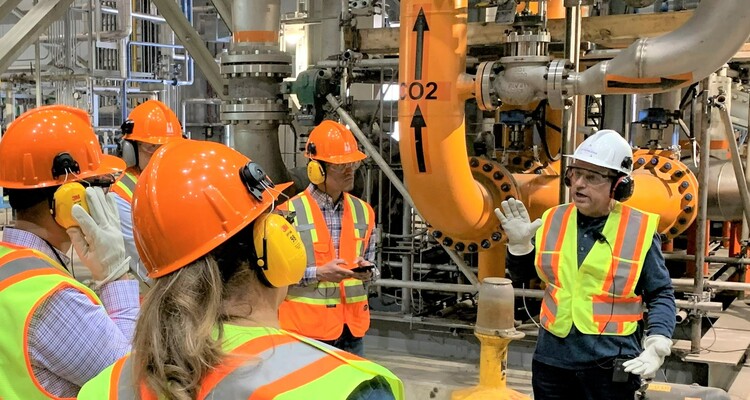As political leaders meet in Egypt for the United Nations’ annual climate change conference to assess the world’s progress in tackling climate change, much of the discussion in Canada is centred on who should foot the bill for the massive cuts to greenhouse gases required by the Paris Agreement. How much taxpayers should support decarbonization efforts, and where oil and gas companies are investing their profits are important questions, but too often they are framed in the outdated ‘economy versus the environment’ narrative that continues to sap our country’s momentum in addressing the defining problem of our time.
As the first truly global energy crisis is painfully illustrating, trying to balance the world’s growing demand for reliable, affordable and responsibly produced energy while simultaneously working to meet ambitious goals for cutting greenhouse gases is not easy. It is a particularly daunting challenge for Canadians, as our lifestyles are energy intensive and our economy is founded on heavy-emitting industries that supply many basic products and resources the rest of the world desires. At the same time, our national climate targets aim to slash GHGs one-third by 2030 and reach net-zero emissions across the country by 2050.
Thankfully, many of the technologies that will help us get there are already in play in Canada – including a key solution in which we are a world leader – carbon capture and storage (CCS). We are home to five of the world’s 30 commercial CCS facilities, and we account for approximately 15 per cent of current global CCS capacity even though our country generates less than two per cent of global CO2 emissions.
Canada’s latest climate plan calls for more than tripling the country’s CCS capacity over the next decade. It is expected to play a central role in eliminating emissions not only from the oil and gas sector, which accounted for 180 million tonnes of GHGs in 2020, but also the 115 million tonnes that come from power generation and other heavy industries. With more than 100 new projects in development worldwide, some estimate the CCS industry will grow to be a $55 billion/year industry by 2030, and it is expected to be responsible for 25 per cent of the emissions reductions required for the world to reach net zero emissions by mid-century.
With this level of activity underway, it is clear that Canada is uniquely suited to capture enormous value from the CCS boom on the horizon. Capitalizing on this opportunity is critical to ensuring our energy transition does not destroy the vital industries that are the lifeblood of communities across the country. Instead, CCS enables a just and sustainable transition by making our heavy-emitting industries part of the solution.
Most of the largest investments Canadian energy companies and their peers in other heavy industries are planning to make in the coming years are not in traditional growth projects. Instead, virtually all of the country’s resource-based firms – from mining and electricity to cement, steel and fertilizer manufacturers – are looking to add large-scale CCS to their operations. More than a dozen projects are at various stages of development in B.C., Alberta, Saskatchewan, Manitoba and Quebec, each one representing the potential for thousands of high-quality jobs for engineers, tradespeople and suppliers; economic partnerships with local Indigenous communities, and ongoing employment for qualified people to run these facilities.
In Alberta, for example, the Pathways Alliance – a partnership of the six largest oil sands companies – plans to invest more than $24 billion in one of the world’s largest CCS projects and other emissions reduction technologies by the end of the decade. This is expected to generate 35,000 construction-related jobs, 1,000 new permanent positions, protect more than 25,000 existing jobs, and unlock more than $50 billion in GDP. Meanwhile, international cement producer Lehigh Hanson aims to build the world’s first full-scale CCS project on its Edmonton cement plant by 2026 – creating 800 full-time jobs and approximately 7,000 person-years of employment in the process.
Beyond the immediate economic benefits, there are broader long-term opportunities from leveraging Canadian leadership in the CCS sector. The innovation and expertise created by clean tech projects is easily exported, and it is in high demand as global climate action gains traction. In tandem with this is the competitive advantage that can be captured by our industries being the first to supply the low-carbon commodities that can fetch premium prices in a decarbonizing world.
We are at a critical point, as world emissions continue to grow and Canada risks falling behind our competitors when it comes to getting CCS projects off the ground. It is imperative that companies receive the business certainty they need to move forward on the timeline required to meet our climate obligations.
We have the home-grown expertise necessary to continue playing a leading role in this exciting area. Let’s make sure we don’t miss out on such a valuable opportunity.
This column was originally published in the Calgary Herald on Nov. 15, 2022
